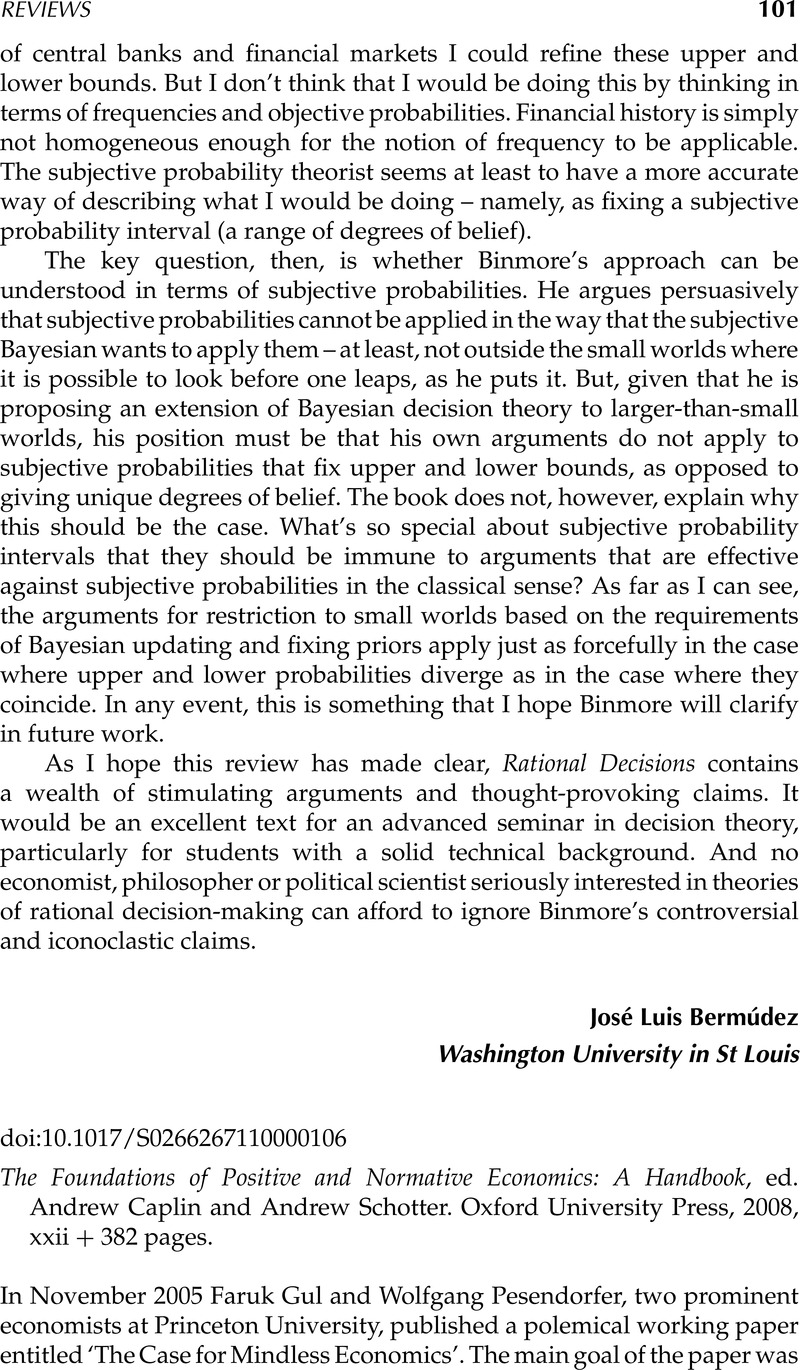Crossref Citations
This article has been cited by the following publications. This list is generated based on data provided by Crossref.
Schipper, Burkhard C.
2009.
How Mindless is Standard Economics Really?.
SSRN Electronic Journal,
Spears, Dean
2009.
Bounded Rationality as Deliberation Costs: Theory and Evidence from a Pricing Field Experiment in India.
SSRN Electronic Journal,
Camerer, Colin F.
2011.
The Promise and Success of Lab-Field Generalizability in Experimental Economics: A Critical Reply to Levitt and List.
SSRN Electronic Journal,
Frydman, Cary
Barberis, Nicholas
Camerer, Colin F.
Bossaerts, Peter L.
and
Rangel, Antonio
2011.
Testing Theories of Investor Behavior Using Neural Data.
SSRN Electronic Journal,
Grüne-Yanoff, Till
Marchionni, Caterina
and
Moscati, Ivan
2014.
Introduction: methodologies of bounded rationality.
Journal of Economic Methodology,
Vol. 21,
Issue. 4,
p.
325.
Vromen, Jack
2021.
What are we up to?.
Journal of Economic Methodology,
Vol. 28,
Issue. 1,
p.
23.
Moscati, Ivan
2024.
Behavioural and heuristic models are as-if models too – and that’s ok.
Economics and Philosophy,
Vol. 40,
Issue. 2,
p.
279.



